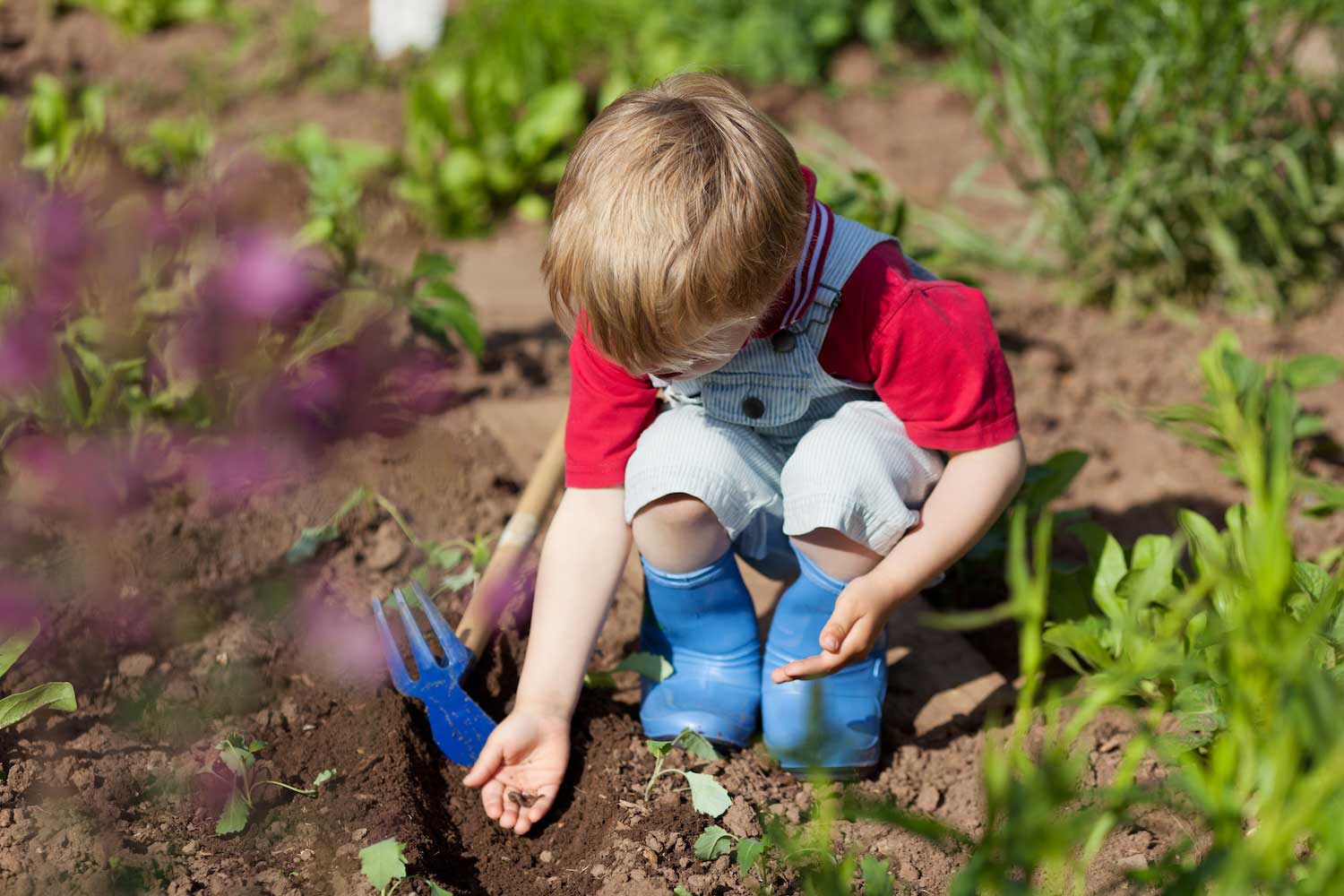Want your kids to respect nature? Get your garden growing with them

Native plants have been getting plenty of buzz lately, and for good reason. There are many reasons to garden with native plants. For starters, they require little in the way of maintenance and upkeep. Plus they attract lots of pollinators and other wildlife too. One more reason to consider adding native plants around your home is that it can be a good way to teach children to be good stewards of the environment.
As they learn more about the world around them, kids become more likely to take actions that protect biodiversity because they feel empowered by their gardening experience, National Geographic reports.
“Native plants have the power to nurture and inspire kids,” Jen Aguilar, education program coordinator for the California Native Plant Society, told National Geographic. “It allows them to see themselves playing a role in the protection of nature.”
Gardening with your kids — whether fruits and vegetables or native plants — also provides hands-on lessons on the environment. As you work together to prepare the garden and dig holes for your plants and seeds, kids will get their hands dirty and see what lives in the soil all around them. Along the way, they will learn that healthy soil and water are important in our ecosystems, Today's Parent reports. As their plants grow, they will see firsthand how they grow, what they need to thrive and more.
For young kids, gardening aids in their physical development as well. Outdoor tasks allow young children to practice locomotion and body management, according to the Michigan State University Extension. As they carry gardening tools and move about the garden, they are practicing their object control skills. And kids use both fine motor and gross motor skills while they complete various tasks in the garden.
Planting a garden together can also be a good way to bond as a family. As you plan and then plant, you are spending time together working toward a common goal. Letting everyone have some ownership of the project — picking colors and even specific plants to plant — will allow everyone to see themselves reflected in your family garden.
Ready to get gardening with your kids? Here are a few tips for getting started:
Know your area: Native plants are native to certain regions, so before you get started it's important to know what will thrive where you live. Many online resources exist to help you find plants that are native to Illinois and the Midwest. The Illinois Department of Natural Resources maintains an online list of native plants for home landscapes, and the National Audubon Society has a database of bird-friendly native plants that can be searched by ZIP code. In addition to knowing what grows where you live, make sure to pick plants that will tolerate the light and soil conditions where you intend to plant.
Get child-sized tools: Keep gardening easy and fun for your kids by getting some gardening tools that are the right size for them, USA Today recommends. Appropriately sized tools will be easier for them to maneuver, making gardening tasks easier and less frustrating to complete. And while some kids like getting their hands dirty, not all do. If your kids don't enjoy dirt under their fingernails, offer some child-sized gardening gloves to help them keep their hands clean while they work.
Include at least some plants that flower quickly: Young kids like to see the fruits of their labor, so include in your garden some plants that flower quickly, the National Wildlife Federation advises. When planted from seed, native plants can take a few years to establish themselves and then flower, so you may want to include some plugs or young plants that will flower the first year so your kids can see the results of their hard work.
Start small: Just dedicating a corner of your yard or a small section of your landscaping to native plants is a good place to start, the wildlife federation advises. You don't want to start with too large of a space because you — and your kids — can become frustrated and discouraged. Starting small will allow you and your kids to get comfortable with your plants and gardening techniques. You can always expand your garden each year until you reach the desired size.
Add gardening tasks to the chore list: The work of gardening doesn't stop once the seeds and plants are in the ground. New plants need to be watered until they are established, and you'll need to weed your garden bed to allow your native plants to thrive. Involve your kids in these tasks so they stay engaged throughout the growing season. You can even turn these chores into fun games. For example, challenge them to see who can pull the most weeds or fill their watering cans the fastest, National Geographic suggests.
Journal your experience: Document your garden's progress by journaling about it, USA Today advises. Both kids and adults can journal their experiences, jotting down notes and even drawing pictures of your garden as the season progresses. In subsequent years, you can use your journal to see how things have changed over time.
